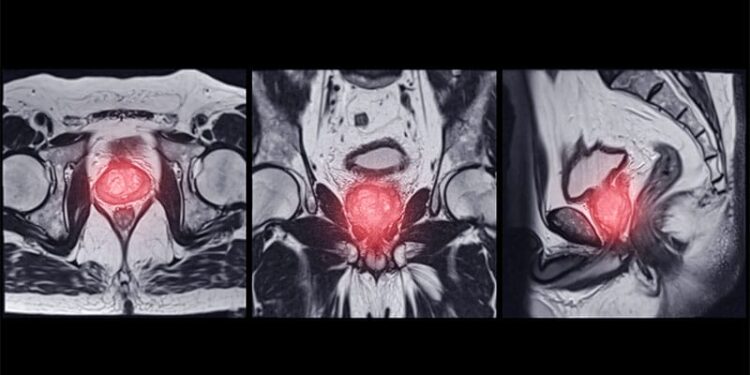TOPLINE:
In a large-scale diagnostic study, artificial intelligence (AI) assistance led to a superior improvement in prostate cancer detection on MRI, increasing diagnostic accuracy by 3.3% compared with unassisted readings. AI support enhanced both sensitivity (96.8%) and specificity (50.1%) at detecting clinically significant prostate cancer (csPCa).
METHODOLOGY:
- Researchers conducted a diagnostic observer study in which 61 readers (34 experts and 27 non-experts) across 17 countries assessed 360 MRI examinations of men with prostate cancer (n = 360; median age, 65 years) with and without AI assistance.
- The AI system used in this study was curated and developed within the international Prostate Imaging-Cancer AI (PI-CAI) Consortium for the detection and diagnosis of csPCa.
- The primary objective was to assess whether AI-assisted csPCa diagnosis was superior to unassisted diagnosis at the patient level using the area under the receiver operating characteristic curve (AUROC), sensitivity, and specificity at a Prostate Imaging Reporting and Data System threshold of 3 or more.
TAKEAWAY:
- Among 360 men who were examined, 122 harboured csPCa.
- The AUROC was 0.916 with AI assistance vs 0.882 without, showing an improvement of 3.3% (P < .001).
- The sensitivity was 96.8% for AI-assisted assessments vs 94.3% for unassisted assessments, showing a significant improvement of 2.5% (P < .001).
- Likewise, the specificity was 50.1% for AI-assisted vs 46.7% for unassisted assessments, showing an improvement of 3.4%.
- Non-expert readers showed greater performance improvement with AI assistance than expert readers, achieving higher AUROC scores than those of unassisted experts.
IN PRACTICE:
“The findings of this diagnostic study suggest the potential of AI assistance in improving csPCa diagnosis when compared with unassisted assessments of biparametric MRI, with statistically significant improvements observed across AUROC, sensitivity, and specificity at a PI-RADS [Prostate Imaging Reporting and Data System] score of 3 or more. Notably, nonexpert readers demonstrated higher benefits from AI assistance compared with expert readers,” the authors wrote.
SOURCE:
This study was led by Jasper J. Twilt, MSc, Minimally Invasive Image-Guided Intervention Center, Department of Medical Imaging, Radboud University Medical Center, Nijmegen, the Netherlands. It was published online on June 13, 2025, in JAMA Network Open.
LIMITATIONS:
The data included were retrospectively curated within the scope of PI-CAI, resulting in a mix of consecutive and sampled cohorts. The study’s generalisability requires further validation across external cohorts with varying disease prevalence, image quality, and other clinical factors. The controlled online reading workstation environment differed from readers’ native settings, potentially affecting diagnostic performance. This study did not assess workflow efficiency or the clinical applicability of performance improvements in real clinical settings.
DISCLOSURES:
This study received funding support from Health-Holland and the European Union’s Horizon 2020. Several authors reported receiving personal fees and research funding and having other ties with various sources.
This article was created using several editorial tools, including AI, as part of the process. Human editors reviewed this content before publication.
Source link : https://www.medscape.com/viewarticle/artificial-intelligence-enhances-prostate-cancer-detection-2025a1000g8i?src=rss
Author :
Publish date : 2025-06-20 12:00:00
Copyright for syndicated content belongs to the linked Source.



